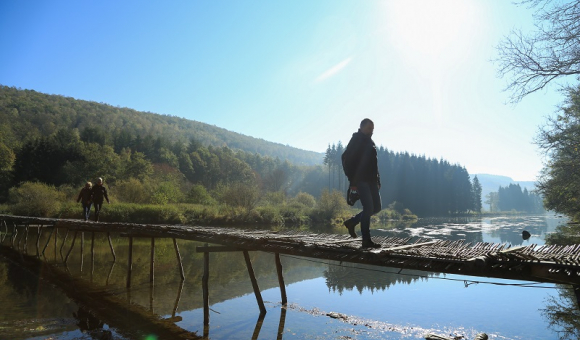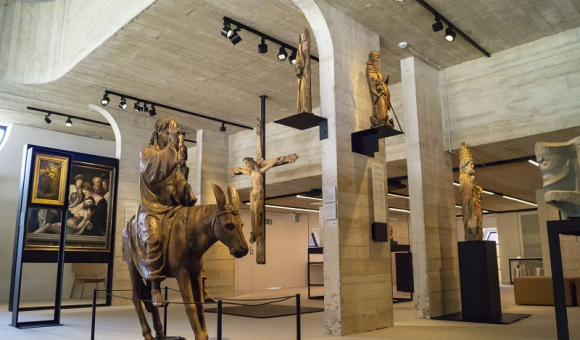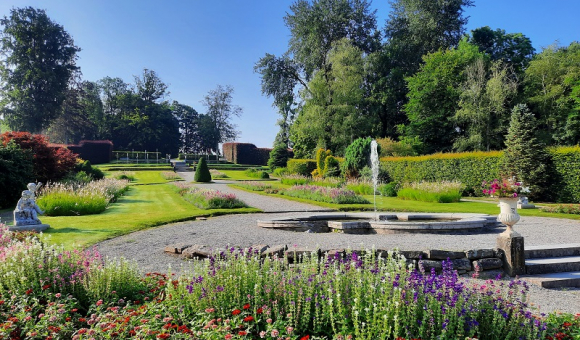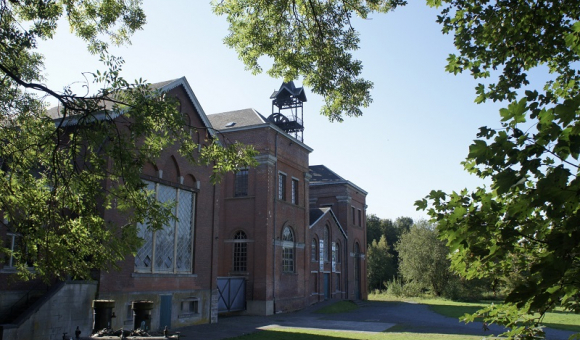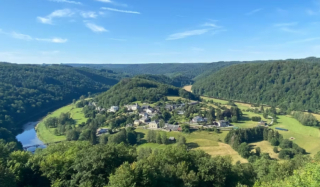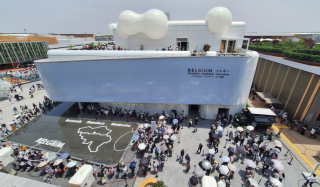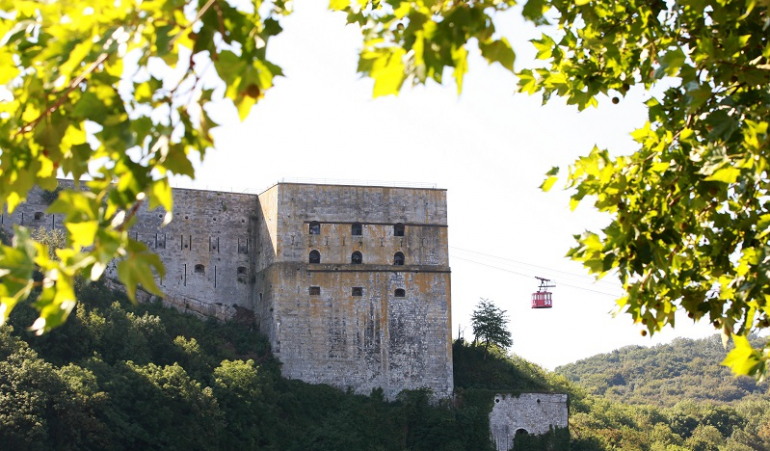
Ancient art, mining sites, water gardens, areas of natural beauty... Wallonia is bursting with remarkable places, recognised as major heritage sites or with UNESCO certification. It's all there for you to (re)discover – so what are you waiting for?
Province of Namur: Annevoie Gardens, unique water games
Nestled in the Meuse valley between Namur and Dinant, a romantic stroll awaits you in the Annevoie Gardens — one-of-a-kind in Belgium, and among the most beautiful in Europe. The Gardens were first owned by the de Halloy family, and then by the de Montpellier family from the 18th century onwards, who were forge masters and had the means to extend the castle and gardens. Inspired by his travels throughout Europe, Charles-Alexis de Montpellier designed three types of garden: French, Italian and English. The Gardens were opened to the public in the 1930s. In 2017, both the Gardens and the Castle were taken over by the Domaine Historique du Château et des Jardins d’Annevoie private foundation, established in 2016 by Ernest-Tom and Anne-France Loumaye. The aim of the foundation is to restore, preserve and enhance the estate of Annevoie and its water gardens, listed as one of Wallonia's major heritage sites. It promises to be a beautiful day out that you'll never forget! Self-guided and guided tours available by prior arrangement. Accommodation available at The Mill cottage. www.annevoie.be
Province of Hainaut: The Bois-du-Luc mining site, experience life in the days of coal mining
Ready for a change of atmosphere? Let's head west where the old meets the new. Le Musée de la Mine et du Développement Durable (Mining and sustainable development museum — MMDD), or the Bois-du-Luc mining site, is a major testament to the industrial era, listed as a UNESCO World Heritage Site since 2012. From the old Saint-Emmanuel Pit to the heart of the company town, a visit to Bois-du-Luc will immerse you in the story of a colliery, and shed light on the miners' living conditions, their work, daily lives and leisure activities. A great family day out full of surprising discoveries. While parents explore the site using an audioguide, the kids can awaken their senses to seek out photos of various objects and characters throughout the mine. After visiting Bois-du-Luc, you'll come away with an understanding of the inner workings of a coal mine and a sense of its exceptional longevity (1685–1973), as well as discovering a landscape shaped both for and by its work. Make sure not to leave without adding a touch of green to your trip with a walk or cycle along the wooded slag heaps. www.mmdd.be
Province of Brabant: Musée L, a different kind of museum
Are you familiar with the Musée L? It's the university museum in Louvain-la-Neuve. The museum opened its doors to a renovated building in 2017, and is the first ever large-scale university museum in Belgium that's accessible to the public. Made up of almost 2,000 pieces of work, its collections span a huge period from prehistoric times to the modern day and takes its visitors on a journey across the world: power figures from the Congo, antique vases, Noh masks from Japan... as you wander through the six floors of permanent exhibitions, you'll discover works of art and items from each continent and every stage of history. The work of famous artists like Magritte, Goya, Miró, Delvaux... a Buddha next to a medieval Christ, ancient writings... so why should you pay this museum a visit? Because it brings a whole world of diversity together in one place, because of the dialogues between the works, its unique scientific collections and the three laboratories when you can get your hands on the works themselves. The museum also offers a large range of family-oriented activities: creative workshops, relaxing spaces to chill out, a picnic area to meet up with friends... https://museel.be/en
Province of Liège: Huy fortress, a place of remembrance
Let's head east, along the Meuse, and make a stop in Huy. There it is, the castle turned fortress, imposing and grey as stone, nestled in its green surroundings. Built by the Dutch between 1818 and 1823, Huy fortress has never lost its charm. It's a bit of a climb, but the destination makes it well worth the effort. From the top, the views are incredible, with the town stretching out along the curve of the hills and the meandering Meuse. It's also our duty to remember the Second World War by visiting the Huy fortress, whose significance derives from its heavy past. The German army turned the fort into a concentration camp between May 1940 and September 1944, with the camp holding more than 7,000 prisoners. As you pass the carriage entrance, you'll find yourself immersed in this prison world. The site offers a real insight into the world of Nazi concentration camps, with its dungeons, interrogation rooms, detention rooms and crude washrooms. The museum space presents visitors with the living conditions of the prisoners and the daily life of the locals during the German occupation. You'll find out even more about this difficult time with 15-minute video, where first-hand witnesses recount their experiences of this painful time. The site comes alive with temporary exhibitions, events and shows. The fortress was built on the ruins of a castle, known as Li Teschtia in Walloon. It's one of Huy's four wonders, along with Li Rondia, the collegiate church with its rose window, the bridge Li Pontia, and Li Bassinia, the fountain crowning the centre of the Grand Place. Why not make the most of your visit to Huy and discover these gems at the same time? fort@huy.be
Province of Luxembourg: Semois Valley National Park and Famenne-Ardenne Geopark, two remarkable natural sites
Descendons vers le sud et retrouvons les beautés de la nature. Le Geopark Famenne-Ardenne, c’est 900 km² de paysages d’intérêt géologique exceptionnels, labellisé par l’Unesco. Il compte les communes de Beauraing, Durbuy, Hotton, Marche-en-Famenne, Nassogne, Rochefort, Tellin et Wellin, mais aussi des grottes, dont les célèbres grottes de Han et les plus discrètes de Lorette à Rochefort, des arboretums, des châteaux et villages pittoresques. Tout cela est en lien avec l’élément géologique de renommée internationale, la pierre calcaire, la Calestienne. Ici, la mobilité douce est privilégiée avec des activités comme la randonnée, le vélo et l’accessibilité pour tous.
If we head south, we come across these natural beauties. The Famenne-Ardenne Geopark boasts a 900-km² landscape of exceptional geological interest, certified by UNESCO. It covers the towns of Beauraing, Durbuy, Hotton, Marche-en-Famenne, Nassogne, Rochefort, Tellin and Wellin, as well as caves, including the famous Han caves and the slightly more understated Lorette cave in Rochefort, plus arboreta, castles and picturesque villages. All this located along the internationally renowned geological element, the thread of limestone rock known as the "Calestienne". The area encourages gentle movement with activities like walking, cycling and accessibility for all. We're rounding off our journey with one last gem, the Semois Valley National Park, as it's been called since 9 December 2022, when the Walloon Government recognised this region's many scenic assets, like the forests, valleys, stone villages and the meandering Semois river. The municipalities of Bertrix, Bouillon, Chiny, Florenville, Herbeumont, Paliseul, Tintigny and Vresse-sur-Semois spread over almost 29,000 hectares. This new designation protects the area, but also works to develop its assets with sustainable tourist activities, with over 70 projects promoting biodiversity set to be put in place over the next four years.
Jacqueline Remits
